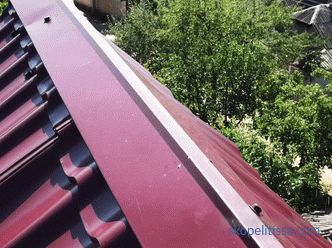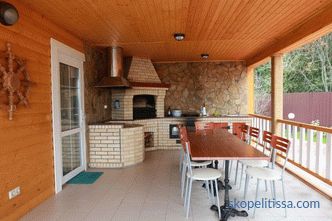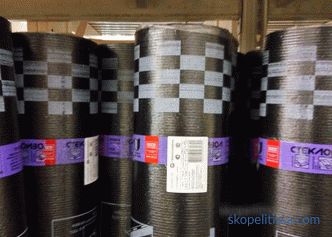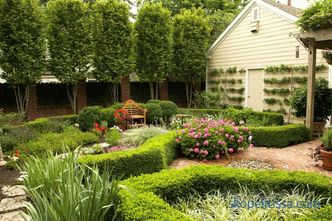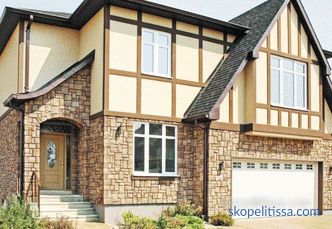News / Real Estate from 14. 10. 16 g

In recent years, the domestic real estate market Wooden and low-rise houses were popular. But after the crisis began, this market segment became inert and fell into some stagnation. Although now the situation is changing for the better. About the prospects of low-rise construction "Vesti. Real Estate" told the manager of the exhibition of houses "Low-Rise Country" Roman Konyakhin.
- How would you describe the overall situation in low-rise suburban real estate? How tangible is the crisis?
- The crisis in the low-rise residential real estate market is still palpable. Sales of low-rise housing fall, but in the total volume of housing commissioned, low-rise housing retains its share, both in the Russian Federation as a whole and in the Central Federal District, the Moscow Region and Moscow. Statistics show that the share of low-rise housing, which includes apartment buildings, townhouses, duplexes, cottages and country houses has not changed. The decline was no more than 2 percent. In the Moscow region, every third square meter is introduced in 2016 in low-rise housing.
However, if you look at the Rosstat data and the volume of low-rise housing input in physical units, it can be noted that the increase in input in 2016 remained only in the Moscow region. In Russia as a whole, there was a decrease by 8 percent, and in the Central Federal District by 9 percent. In Moscow - by 28 percent.
According to our analysts, in 2016, 37.99 million square meters of low-rise housing in all of Russia will be introduced, and in the Moscow region this figure will be 3.7 million meters.
Last year in Russia there was a slight drop in the new construction of wooden houses. But this year the situation is leveling off and in the two-year term the growth of wooden housing construction is expected to be 3 percent. Although this is a positive dynamic, however, the ideal is still very far away. Some market experts estimate the growth potential of wood housing in Russia at 300 percent. But, while these indicators look too utopian.
- Do you think the sales crisis has already entered its mature phase or is everything ahead?
- It can be said that the low-rise housing market is slowly beginning to climb out of the crisis. So, in 2016, the number of transactions in the country market increased. And this is celebrated not only in the economy segment, but also in the premium (4 percent), which has felt the greatest pressure from the crisis. Rosstat cites statistics on the growth of the average check for the purchase of a house by about 5-10 percent. According to surveys of participants in the exhibition "Low-Rise Country", a number of home-producers are optimistic. In 2017, they expect to start, though small, but growth. Worse than in 2016 should not be. But, as often happens, there are radically opposite opinions. Some participants in the low-rise residential construction market predict a further decline in consumer demand.
- What is the pricing policy of manufacturers, according to your observations? What is the reason for the reduction or increase in prices?
- A number of manufacturers are forced to make adjustments to their pricing policy. Someone from the business and business plus segment goes into the middle price segment. Someone from the middle price segment goes to economy plus. There are examples when the company remains in its price segment, but offers customers delivery of the house not with interior decoration, as it was until 2015-2016, but in stages. So, for example, in order to reduce the purchase budget at the start, they rent a house without interior decoration.
- Under the conditions of "natural selection", when the strongest survive, is there a risk of monopolization of the market by large producers?
- Of course, the strongest survive during the crisis. But we do not expect the risk of monopolizing the market. There are many manufacturers. A lot of home building technology.
- Did any new trends emerge in the low-rise housing market as a result of the crisis?
- In the real estate market, one of the most important, in my opinion, trend is noted. People understand that for the price of a one-room apartment in the city, you can buy a house outside the city with an area of two to three times the city apartment. Plus get a land on which you can grow organic fruits and vegetables.
Sustainability is becoming more and more an important requirement for suburban real estate buyers. Moreover, this requirement includes not only the environmental friendliness of the material of the house, but also the thermal efficiency of the house, which means saving energy and not polluting the environment with excess products of combustion.
The initiative of the Ministry of Economic Development and Trade on taking measures to support wooden construction is currently working to help this trend.It is planned to stimulate the demand for the construction of wooden houses, including above 3 floors, at the expense of preferential mortgage lending to the population, as well as by establishing tax preferences for houses built of wood. There are proposals to create special banking programs for lending to developers who will build wooden houses.
For the development of the wood processing industry, enterprises producing wooden structures plan to subsidize part of the cost of purchasing high-tech equipment and software for designing wooden houses. Currently, a draft action plan has been developed, which is being approved by the relevant departments.
- How have consumer preferences changed lately?
- We regularly conduct surveys of visitors at the exhibition, which form the basis of analytical research. Thus, according to one of the latest surveys, the share of young buyers aged from 25 to 34 years old, grew by almost 2 percent over the year and amounts to 14.7 percent of the total number of visitors.
Most visitors make their choice in favor of a classic Russian izba, except for the number of floors (it must be higher than one floor) and additional heating (with a stove or fireplace).
Consumer preferences in terms of construction technologies have also changed. Demand in 2016 is enjoyed by houses made using frame technology (14.5 percent of the exhibition visitors voted for them).
- What, in your opinion, is waiting for the Russian low-rise real estate market early next year?
- According to our estimates, next year the situation in the low-rise real estate market will not worsen. But we do not undertake to forecast growth either. Stagnation and inertia is the picture of today.
Rate this article, we tried for you
